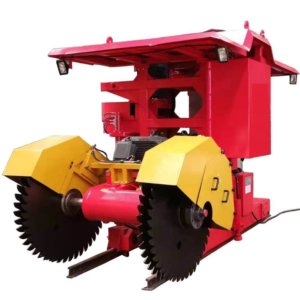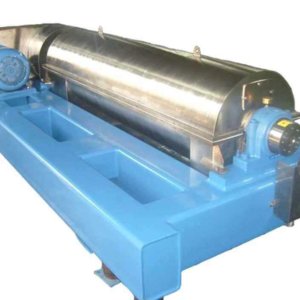Table of Contents
- What is a CNC Stone Moulding Machine?
- Applications of CNC Stone Moulding Machines
- Key Features of Our Automatic Machine
- Technical Specifications
- Industry Applications
- Case Studies
- Competitive Advantages
- FAQ
- Video Show
What is a CNC Stone Moulding Machine?
A CNC Stone Moulding Machine is an automated solution designed for shaping, profiling, and polishing stone edges with micron-level precision. Unlike traditional manual methods, this machine integrates advanced robotics and diamond tooling to produce consistent results for marble, granite, and engineered stone.
Core Functionality
Equipped with 5-axis motion control, it handles complex geometries like ogee edges, bullnoses, and custom artistic patterns in a single setup. Operators can input designs via CAD files or choose from pre-loaded templates.


Applications of CNC Stone Moulding Machines
Versatile Processing Capabilities
- Architectural elements: Door frames, window sills, column wraps
- Decorative edges: French cove, waterfall, double bullnose
- Specialty profiles: Roman ogee, dupont, lamb’s tongue
Our machines seamlessly process materials ranging from soft marbles (Mohs 3-4) to hard granites (Mohs 6-7), achieving surface finishes up to 3000 grit mirror polish.




Features of Automatic Stone Processing Machine
Innovative Engineering
- Multi-spindle configuration (8-12 tools auto-change)
- Laser positioning system (±0.1mm accuracy)
- Dust-free operation with integrated water filtration
For operations requiring heavy-duty cutting, our Stone Cutting Machine provides complementary capabilities.


Technical Data
| Product type | Unit | QZY-8 | QZY-10 |
| No. of the profiling /polishing wheel number | pcs | 8(2 Profiling wheel +6 Polishing Wheel) | 10(3 Profiling wheel +7 Polishing Wheel) |
| Dia of the profiling / polishing wheel | mm | Ø200 | Ø200 |
| Conveyor belt width | mm | 250 | 250 |
| Bore Profiling/Polishing wheel | mm | Ø30 | Ø30 |
| Working width | mm | 120-1200 | 120-1200 |
| Working thickness | mm | 15-80 | 15-80 |
| Profiling &polishing speed | m/min | 0-2 | 0-2 |
| Water consumption | L.min | 100 | 120 |
| Total power | kw/h | 39 | 48.5 |
| Rolling table *2 PCS | mm | 1500×500 | 1500×500 |
| Gross weight | kg | 5000 | 5500 |
| Dimensions(L×W×H) | Mm | 6100×2300×2000 | 7100×2300×2000 |
Industry Applications
From kitchen countertop manufacturers to monumental stone workshops, this machine revolutionizes production efficiency. When paired with our Bridge Saw Machine, users can achieve complete slab processing workflows.


Case Studies
Project 1: Luxury Hotel Lobby in Dubai
A Dubai contractor reduced marble column production time by 68% using our machine for complex fluted designs, achieving mirror-polished surfaces in a single pass:cite[1].
Project 2: High-End Stone Table Manufacturer in Yunfu
A Chinese manufacturer utilized the 5-axis CNC capabilities to produce luxury stone tabletops with intricate edges, increasing monthly output by 40% while reducing material waste by 22%:cite[8].
Project 3: Architectural Element Supplier in Xiamen
After adopting the multi-axis intelligent polishing system, a supplier reported a 90% reduction in surface defects for French-edge marble panels, securing contracts with European luxury brands:cite[9].
Competitive Advantages
- Energy-saving inverter motors (30% less power consumption)
- Remote diagnostics via IoT connectivity

Frequently Asked Questions
Q1: How to resolve conveyor belt misalignment?
A1: Check for debris under the belt and adjust tension screws on both sides of the idler wheel. Regular calibration prevents 80% of alignment issues:cite[7].
Q2: Why do some areas remain unpolished?
A2: This typically indicates bent guide rails or improper wheel calibration. Use a straightedge to verify guide rail alignment and recalibrate polishing wheels using reference stone blocks:cite[7]:cite[10].
Q3: How to handle sudden system alarms?
A3: Common alarms include:
– Emergency Stop: Reset the red button
– Overload: Check motor loads in the electrical cabinet
– Phase Loss: Verify 3-phase power supply stability:cite[7]
Q4: What causes spindle speed fluctuations?
A4: Typically caused by encoder belt wear or synchronous pulley damage. Replace nylon timing belts every 1,200 operating hours for optimal performance:cite[7].
Q5: How to optimize automatic tool alignment?
A5: The YXT-200II’s auto-alignment completes in 5 minutes. Ensure diamond tool concentricity ≤0.02mm before starting alignment procedures:cite[5].

















